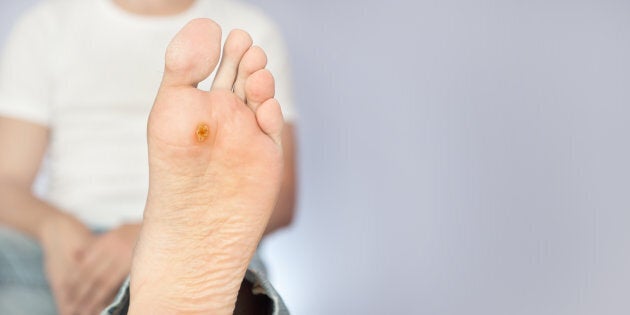
If you're dressing up as a witch this Halloween, you'll know there are a few essential elements you need to perfect your costume: pointy black hat, matching robe, a broom, a black cat, a long, crooked nose, and of course, a couple of warts — preferably ones with long hairs growing out of them.
It's because of this association with witches that warts get a bad rap, but they are in fact very common.
So, what are warts?
According to Healthline, they're raised bumps on your skin caused by the human papillomavirus (HPV).
Who gets them?
Certain people are more likely to get them than others. For example, as WebMD reports, children get warts more often than adults because their immune systems haven't completely built up their defences against the types of HPV out there.
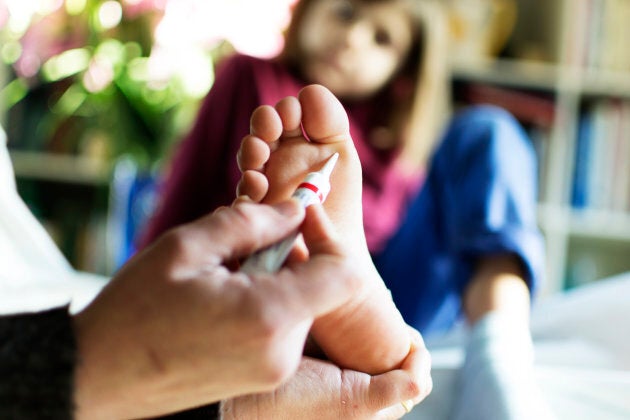
How do we get them?
Warts can sometimes take months to appear after you've made contact with a wart-causing virus, so it can be hard to determine where exactly you picked it up from. But one thing's for sure: you don't get a wart from a toad.
"People get warts from other people with warts, they don't get them from frogs and toads," Robert Brodell, MD, a dermatologist in Ohio, told WebMD. "The most common way is direct skin-to-skin contact, such as shaking hands with someone who has warts on their hand. You can also get the virus from inanimate objects, like towels that have been used by someone with a wart." This means that they're contagious.

HPV viruses are more likely to cause warts when they come in contact with skin that is damaged or cut. Even something as simple as a small scrape or biting fingernails can cause a wart.
What kind of warts are there?
There are five different types of warts, notes Healthline. These are:
Common warts: These are small, grainy skin growths that usually appear on your fingers, hands, or toes. According to the Mayo Clinic, they feature a pattern of tiny black dots, which are clotted blood vessels. Generally, they feel rough to the touch.
Plantar warts: These grow on the soles of your feet, but unlike other warts, they grow into your skin, not out of it. (Shudder.) They look like small holes in the bottom of your feet, surrounded by hardened skin. Sometimes, they can be uncomfortable to walk on.

Flat warts: These are a bit harder to detect, as they're small and have a flat top. They can be pink, brownish, or slightly yellow, and usually grow on the face, thighs, or arms.
Filiform warts: These warts are small and can be mistaken for skin tags as they are shaped like small flaps or tags. They're also the same colour as your skin and appear around your mouth, nose, and on your neck or under your chin.
Periungual warts: These grow under and around the toenails and fingernails, by starting off small and growing to rough-looking bumps that can resemble cauliflower. Eventually, they spread into clusters, and as a result, can affect nail growth and can be painful.
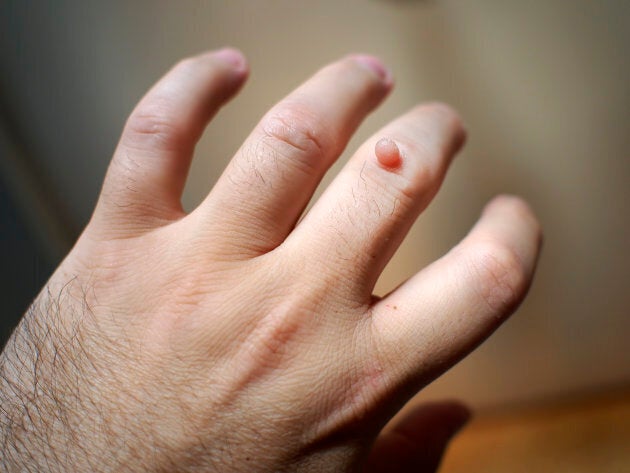
They are common among children and young adults, especially if they bite their nails.
And then there are genital warts
There are a few strains of HPV that cause warts on, in, and around the genitals, called genital warts. These can eventually lead to cervical cancer, which can be fatal, so if you think you have genital warts or if someone you had sex with (intercourse or oral) has them, go to your doctor right away. Learn more about genital warts here.
When you should go to the doctor
The sooner you notice the warts, the earlier you should see your doctor, because the faster they can be removed, the less chance they have at spreading. You should see your doctor if your warts are on your face, mouth, nostrils or genitals; if you notice they're bleeding or if there's pus; the wart is causing you pain; the colour of the wart changes; you have warts and diabetes or an immune deficiency, such as HIV/AIDS.
The sooner you notice the warts, the earlier you should see your doctor, because the faster they can be removed, the less chance they have at spreading.
What can your doctor do?
If it warrants it, dermatologists have several ways in which to treat or remove a wart. These include treating it with cantharidin, which causes a blister to form under the wart, making it easy to remove; cryotherapy (freezing); electrosurgery and curettage, the burning and scraping off of the wart; and excision, whereby the doctor cuts out the wart.
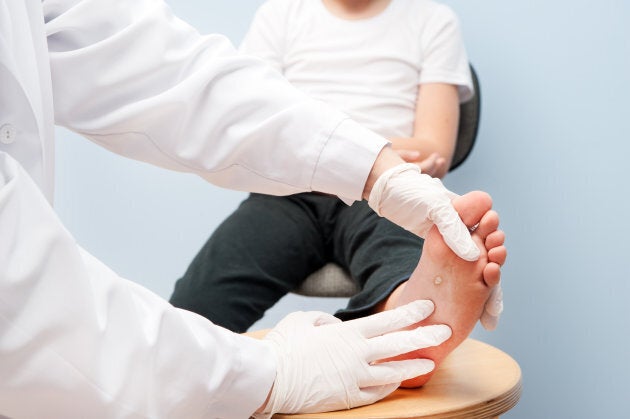
But if these methods don't work, there are other treatments available such as laser treatment, chemical peels, immunotherapy, and bleomycin.
Can you treat them at home?
The American Academy of Dermatology notes that warts often go away without treatment, especially in children.
If you have common warts, that aren't genital warts or causing you pain, your doctor will probably suggest you try over-the-counter wart treatment for a few months, notes WebMD. See your doctor again if they don't go away after a few months.
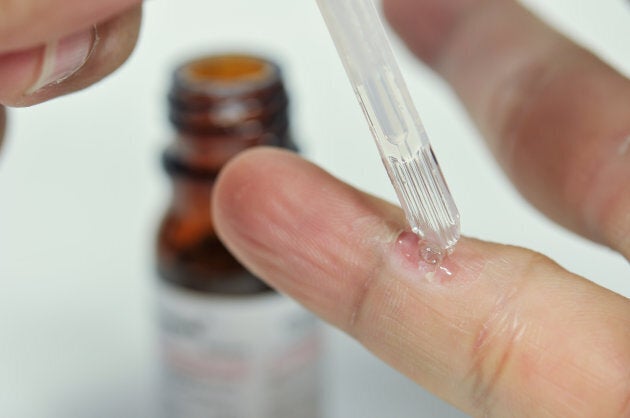
But HealthLine notes not to try to remove warts on your face or other sensitive parts of your body (such as the genitals, mouth, or nostrils) with at-home treatment. This should be left to a professional.
How can you prevent them?
EMedicineHealth recommends avoiding touching warts on others or on yourself (don't rub your fingers on that warty toe). Because warts are often found on the soles of feet, wear flip-flops in the gym locker and when you're at the pool to avoid picking up the virus that causes plantar warts from moist environments.

If you've been in contact with someone who has warts, wash your hands regularly. And if you have them, keep them covered with a bandage to avoid them spreading to other parts of your body, or to other people.
The bottom line is that there is no cure for warts, which means that they can return at the same site or appear in new locations on your body, which is why early treatment is recommended.
Some quick facts about warts
- Warts don't have roots. According to Sherry Mullenix, J.D., R.N., warts only grow in the top layer of the skin. If they do grow deeper, they're just displacing the second layer of skin with their smooth bottoms.
- Because only 10 per cent of all genital warts are visible, you can't actually tell if someone has them, or if you yourself have them, which is why it's important for women to get their pap smear done. Genital warts are typically hidden in the folds of your skin, or are internal. They also usually don't cause you pain.
- You can prevent warts from growing by cutting back on alcohol, exercising, drinking more water, eating more healthy foods, boosting your immune system and cutting back on smoking.